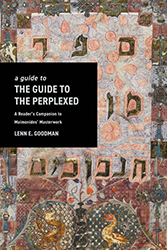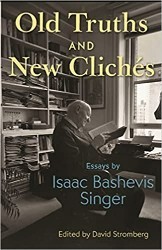This is part of a combined review for A Guide to The Guide to the Perplexed: A Reader’s Companion to Maimonides’ Masterwork.
Lenn Goodman and Phillip Lieberman’s The Guide to the Perplexed and its companion volume, A Guide to the Guide to the Perplexed, offer invaluable contributions to the study of Maimonides’s classic medieval work. Drawing on decades of scholarship, Goodman and Lieberman provide an accessible and comprehensive translation of the Guide, which was first penned in Arabic in 1191. Written in the form of a letter and addressed to a student named Rabbi Joseph, son of Rabbi Judah, the text set out to help readers navigate the tensions between philosophy and science on the one hand and faith on the other. Ever since, the Guide’s claims — about the workings of God, causality in the universe, the meaning behind the commandments in Judaism, the nature of prophecy, and biblical and talmudic narratives — have served as sources of study and debate.
Goodman and Lieberman maintain Maimonides’s casual tone by integrating modern colloquialisms alongside philosophical ruminations (“that is their view in a nutshell,” “I know you will balk at this at first”). They supplement the author’s words with valuable footnotes. Their mastery of Greek and Islamic philosophy allows them to unpack Maimonides’s references and allusions. The authors incorporate numerous other disciplines as well, including archeology and modern evolutionary theory. For example, two footnotes discuss Plato’s Republic, Augustine’s City of God, the biblical book of Isaiah, and Searching for a Distant God by Jewish studies scholar Kenneth Seeskin.
Goodman and Lieberman’s writing, like Maimonides’s own, balances lyricism and deep knowledge. Commenting on the philosopher’s analysis of the multiple meanings of the Hebrew word tzur (“rock”), Goodman and Lieberman bring up Moses’s description of “the Rock whose work is perfect.” “The Torah’s calling God a rock here is another mixed metaphor,” the authors write, “confessing the inadequacy of any figure pointing toward God’s absoluteness. As such images self-deconstruct and deconstruct one another, their dissolution reveals the poet/prophet’s keen awareness of the limits of language.”
In the Reader’s Companion, Goodman provides an exquisitely erudite and succinct biography of Maimonides. He offers a detailed summary of the political, religious, and philosophical winds of the rabbi’s time, as well as a review of the Guide’s major themes and the scholarly arguments surrounding it. It is essential reading for anyone looking to fully understand the Guide and its author.
Goodman and Lieberman’s project demonstrates the impact of a hotly debated, seminal work of religious philosophy that is still read by thousands today. It’s a book that sets out to confirm that, as Goodman puts it, “reason and science will not conflict with the truths God teaches in the Torah.”
Dr. Stu Halpern is Senior Advisor to the Provost of Yeshiva University. He has edited or coedited 17 books, including Torah and Western Thought: Intellectual Portraits of Orthodoxy and Modernity and Books of the People: Revisiting Classic Works of Jewish Thought, and has lectured in synagogues, Hillels and adult Jewish educational settings across the U.S.





